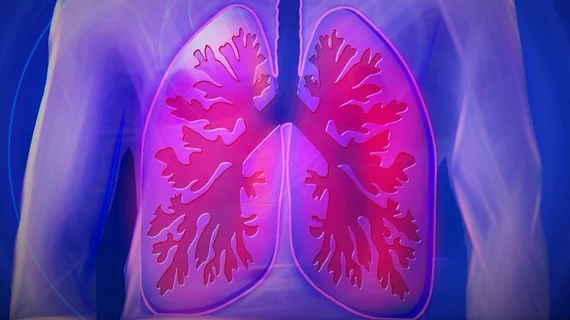These image findings on LDCT screenings offer insight beyond lung cancer
Low dose computed tomography scans are typically used to screen patients for lung cancer, but a new study suggests that image findings from the exam could offer clinical insight beyond their standard purpose.
Research published recently in BMC Pulmonary Medicine examined associations between findings on low dose computed tomography (LDCT) screenings and other conditions, such as cardiovascular, respiratory and oncologic diseases.
“There are many important non oncological conditions which might be disclosed by LDCT,” corresponding author Filippo Longo, from the Department of Medicine and Surgery at Campus Bio-Medico University and Teaching Hospital in Rome, Italy, and-co-authors shared. “Among those are lung fibrosis and bronchiectasis. Furthermore, non-pulmonary findings such as coronary artery calcium and vertebral density and structure might be further valuable information from LDCT.”
The researchers conducted secondary evaluations of LDCT scans from participants of the “Un Respiro per la vita” lung cancer screening program that were completed between April 2014 and May 2015. The images were analyzed for abnormal findings other than nodules, and any participant admissions to acute care for cardiovascular (CD), respiratory (RD) and oncological diseases were tracked for three years following the scans.
Of the 746 participants, 11 (1.5%) were diagnosed with lung cancer. In the years following the initial LDCT scans 16.1% of participants were admitted to acute care—8.6% for CD, 4.3% for RD and 5.2% for OD.
Initial LDCT screenings image findings associated with cardiovascular disease were valve calcifications and mucus plugs, while lung nodules larger than 8 mm, tracheal deviation and mucus plugs were all linked with oncologic admissions and centrilobular emphysema correlated with respiratory disease.
“LDCT scan provided an additional information which seems worthy of being carefully assessed,” the experts said. “Though preliminary and obtained on a small population, these data highlight the potential of LDCT based lung cancer screening for identifying patients at greater risk of CD and RD besides OD.”
The experts suggested that their findings are preliminary, and further studies on larger populations are needed to confirm their findings and produce predictive models for diagnostic accuracy.
More on LDCT screening:
Q&A: What updated reimbursement policies could mean for CT lung screening rates in the United States
Are LDCT lung screening programs overdiagnosing cancer?
Rural veterans less likely to get LDCT lung cancer screenings, prompting doctors to call for change
Stand-alone AI for lung cancer screenings could reduce radiologist workloads by 86%, study suggests

